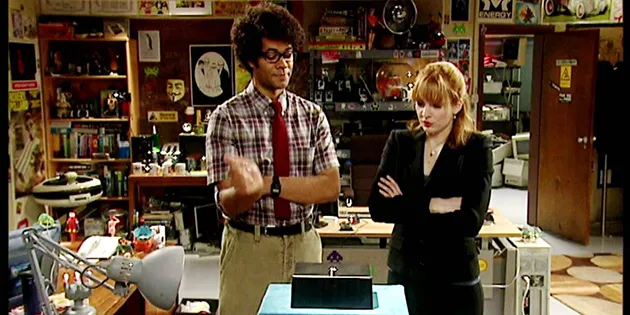Back in the dawn of the 80s, a friend returned to school from a trip to America. He regaled us with one story I particularly remember: visiting a house where they played chess on a computer — against another computer user at the other end of the country, via a telephone line. What he had witnessed, in other words, was the very dawn of the internet, more-or-less as we know it.
Most people, of course, confuse the World Wide Web with “the internet”, but the internet is much more than the Web. And the development of the internet goes back over a decade before my friend played that interstate chess game.
The idea of a networked communications technology that went far beyond the telephone goes at least as far back as the 20s. Over the decades, such wild and fantastic ideas as networked, searchable databases, shared by computers, evolved. Perhaps not surprisingly, the US military took an interest.
In the 1960s, the Department of Defense started using a relatively new technology called “packet switching” to transmit electronic data. Their Advanced Research Projects Agency Network (ARPANET) used packet switching to connect several computers on a single network.
On October 29, 1969, ARPANET was able to send its first message between a research lab at UCLA and the Stanford Research Institute.
It wasn’t exactly a success — but it did have a strange twist of serendipity.
The message, “LOGIN,” crashed the network and the institute only received “L-O.”
“Hence, the first message on the Internet was ‘LO’ — as in ‘Lo and behold!’” Leonard Kleinrock, the UCLA professor of computer science who led the team that sent the message, recalled. “We didn’t plan it, but we couldn’t have come up with a better message: succinct, powerful, and prophetic.”
But the problem remained that different computers often used — and still use — vastly different “languages”. Big companies like IBM, AT&T and Xerox had all developed their own proprietary systems. Trying to get them to communicate was like strangers shouting at each other in a Babel of languages. So, the problem was to develop a common language of sorts.
In the 1970s, two ARPANET researchers named Robert Kahn and Vint Cerf started working on a solution.
“[W]e had multiple networks… all of them packet-switched, but with different characteristics,” Vint Cerf later explained in an interview with Wired. “Some were larger, some went faster, some had packets that got lost, some didn’t. So the question is how can you make all the computers on each of those various networks think they are part of one common network — despite all these variations and diversity.”
The two men created a language that networks could share, which would allow computers to speak to each other. Their Transmission Control Protocol and Internet Protocol, or TCP/IP, established a system for reliable data transfer, but was flexible enough that it would be able to evolve.
“It had to be future-proof,” Cerf told The Guardian, because if the protocol was written for just one point in time, it would later become obsolete.
Decades later, the future-proofing of Cerf’s and Kahn’s language is all around us. Computers still use the protocol suite of TCP/IP finalised in September, 1981. Does this mark the final birth of the internet?
While some credit Kahn and Cerf as the fathers of the internet, the internet we recognize today continued to develop after ARPANET adopted TCP/IP as its communications model on January 1, 1983 (some cite this start date as the internet’s “birthday”).
But the modern “internet” — the World Wide Web — wasn’t developed until about a decade later. In another inspired example of future-proofing, British computer scientist Tim Berners-Lee developed HyperText Markup Language (HTML), still used to write websites today, and the HyperText Transfer Protocol (you’ll see that in the “http” at the start of a web address). HTML was published in 1991, and the browser source code released publicly in 1993. The first internet boom was unleashed.
“Everybody wanted to be there,” Don Nielson, a computer scientist who was in Silicon Valley when the internet was invented. “That was absolutely startling to me: the clamor of wanting to be present in this new world.”
As early as 1992, normal people started talking about “surfing the net” for the first time, according to Live Science.
At first, the web was limited enough that the entire list of websites could be easily catalogued.
By 1993, there were about 600 websites online. By 1994, Yahoo — originally called “Jerry and David’s Guide to the World Wide Web” — was launched, and the website was swiftly followed by sites we recognize today like Amazon, Craigslist, and eBay.
The advent of services like AOL, and then Yahoo!’s free web hosting services like Geocities, led to an explosion of sites. Today, it’s estimated that there are some 1.8 billion websites. Nearly five billion people are connected to the internet — more than half the global population.
HTML, designed originally to send simply-formatted documents, remains the foundation of the web, but new protocols have been successfully incorporated. Cascading Style Sheets (CSS) unleashed web design abilities previously unimaginable. Javascript and AJAX enabled dynamic content.
Like many technologies, the internet had many fathers and pioneers. And given how fast it’s changed in the last several decades, it may soon be completely unrecognizable to even its earliest users.
All That’s Interesting









